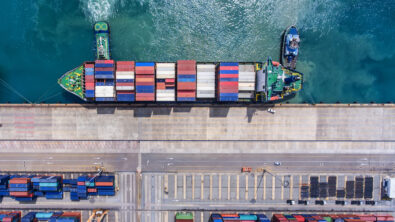Going digital for a competitive retail supply chain

How is it possible to ensure that goods are available at the point of sale when they’re needed despite unforeseeable restrictions?
Constantly creating new shopping experiences. Responding to ever-changing demand and fleeting trends. Accommodating seasonal peaks with precision while constantly staying ahead of the competition. Now more than ever, the retail and consumer goods industry faces challenges that can only be overcome with a new way of thinking. This is true in sales and marketing, but it is especially true in procurement and logistics.
How is it possible to ensure that goods are available at the point of sale when they’re needed despite unforeseeable restrictions? How can retailers cope with changing environmental conditions, supply problems, and an unreliable flow of goods?
How can the demand for carbon-neutral, fair-trade products be satisfied in an economically sustainable way?
Smart digital solutions enable the successful management of expansive international retail and supplier networks. They make it possible to precisely fine-tune production and transport links, ensuring the long-term agility and competitiveness of manufacturers and retailers, both online and offline.

Bringing multichannel to procurement
Digital solutions let you control and optimize every step along the way, from ordering to transport to goods receipt, both inbound and outbound. This requires that the various players in the supply chain be interconnected. Manufacturers, logistics service providers, stores, and markets need a cross-enterprise, system-neutral platform that consolidates all data streams.
Cloud-based solutions like a supply chain control tower make this kind of collaboration in trade a reality. They provide end-to-end visibility of the logistics network across all suppliers, warehouses, and stores—plus complete monitoring of goods deliveries.
The control over shipping processes incorporates all the factors that might lead to delays, unnecessary special transports, or even outright cancellations. This mitigates risk factors such as extreme weather, traffic congestion, or the impact of crises, making goods procurement more resilient and even cheaper in the end.
Download related whitepapers
Online management of offline activities

The pressure that brick-and-mortar businesses feel from e-commerce may be unwelcome, but it is a sign of where everyone is headed: Even offline retail cannot remain competitive over the long term without digital solutions. The support of smart systems for planning and optimization is crucial, even in logistics, to streamline costs and remain responsive.
The digital twin, which can be used to digitally map and analyze supply chains or store networks, is an example of the kind of tools that help make informed decisions. The digital twin uses real, validated data to precisely simulate growth scenarios, forecast capacity reserves, and optimize procurement networks. This makes it possible to calculate and assess the ramifications of changes.
One thing is clear: In the fast-moving world of consumer goods, logistics represents a critical competitive factor. Siemens Digital Logistics has the industry expertise to help you implement your own personalized IT solution.


